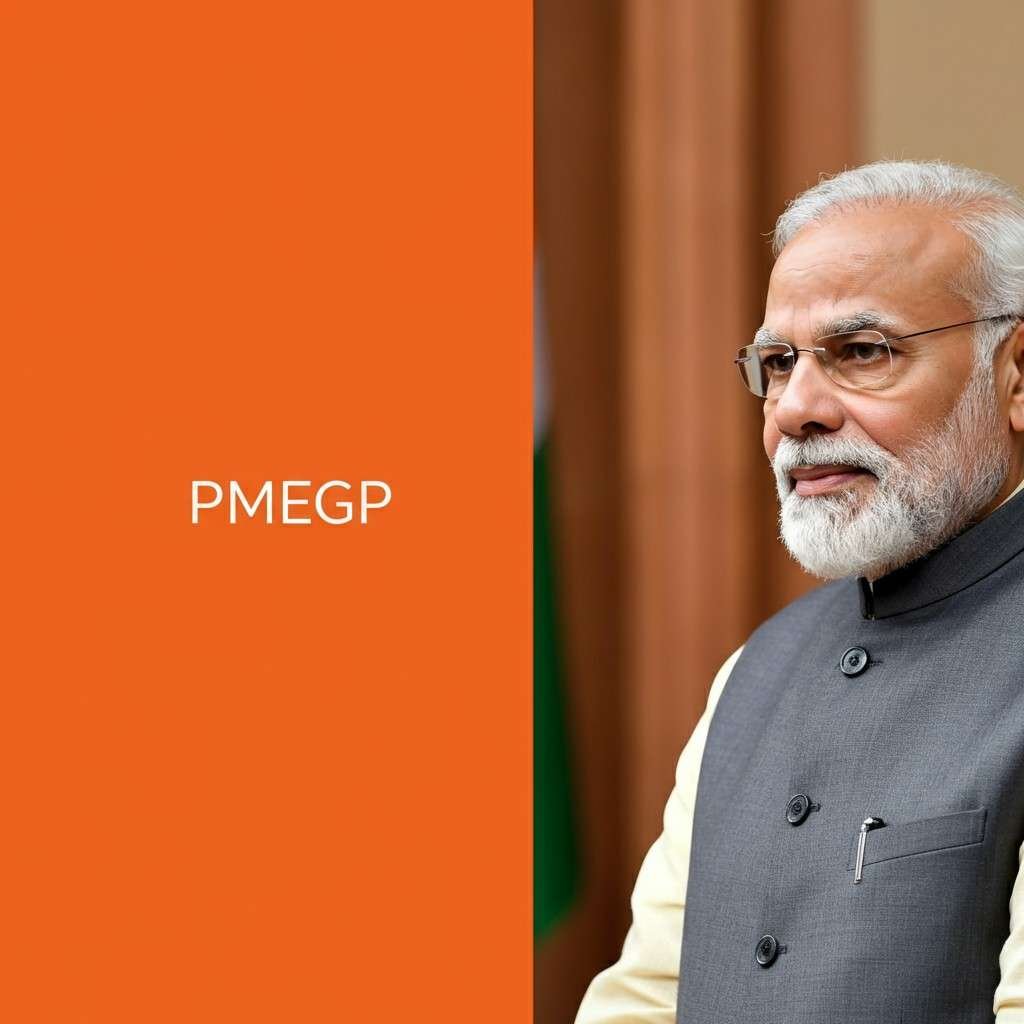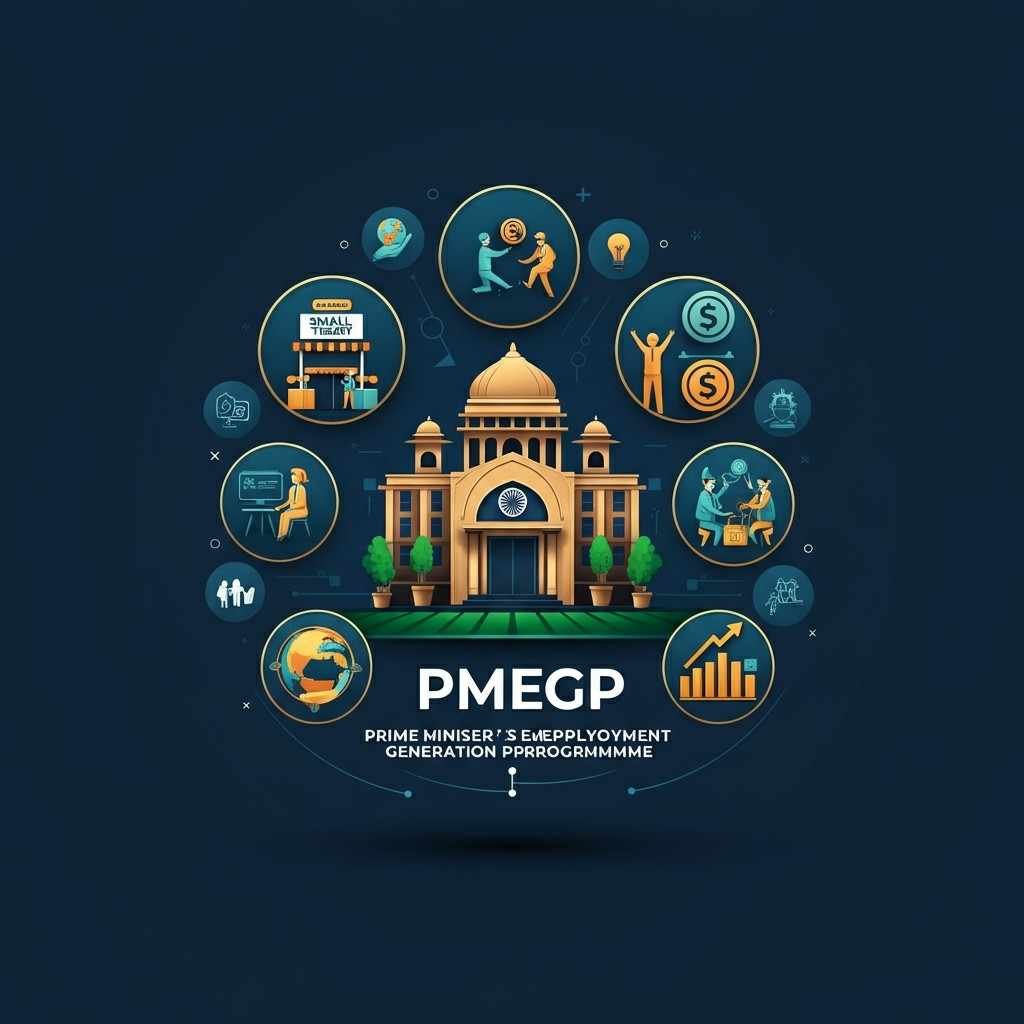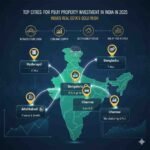
PMEGP: Your Gateway to Starting a Small Business in India
Table of Contents
Starting your own business can feel overwhelming, especially when you’re worried about funding and government procedures. What if there was a scheme designed specifically to help you launch your entrepreneurial dreams? Enter PMEGP – India’s Prime Minister’s Employment Generation Programme that has helped thousands turn their business ideas into reality.
This comprehensive guide walks you through everything you need to know about PMEGP, from its origins to application tips that could make or break your funding chances.
What is PMEGP and Why Should You Care?
The Prime Minister’s Employment Generation Programme is India’s flagship credit-linked subsidy scheme launched to encourage entrepreneurship among unemployed youth and traditional artisans. Simply put, it’s the government’s way of saying “we’ll help you start your business” through financial assistance and support.
Here’s what makes PMEGP special:
- Provides up to 35% subsidy on project costs
- Covers both manufacturing and service sectors
- No collateral required for loans up to ₹10 lakhs
- Creates sustainable employment opportunities
The programme operates under the Ministry of Micro, Small and Medium Enterprises (MSME) and aims to generate employment for at least 40 lakh people. Think of it as your business mentor backed by government funding.
The Journey of PMEGP: From Concept to National Programme
PMEGP didn’t appear overnight. It emerged from the merger of two existing schemes in 2008: the Prime Minister’s Rojgar Yojana (PMRY) and the Rural Employment Generation Programme (REGP).
Key milestones in PMEGP’s evolution:
2008: Launch of PMEGP with initial funding allocation
2013: Expansion to include more sectors and beneficiary categories
2018: Introduction of online application systems for easier access
2020: Digital transformation accelerated during COVID-19 pandemic
2023: Enhanced focus on technology-driven enterprises and startups
The programme has continuously adapted to meet changing market demands. Recent updates include support for e-commerce businesses and digital service providers, recognizing India’s shift toward a digital economy.
Who Can Apply for PMEGP? Understanding Eligibility
Not everyone qualifies for PMEGP, but the criteria are designed to be inclusive while targeting those who need support most.
Primary eligibility requirements:
- Age: 18 years and above
- Education: Minimum 8th grade pass for projects above ₹10 lakhs
- Annual family income: Less than ₹2 lakhs for general category
- Should not have availed benefits from any other government scheme
Special categories with relaxed norms:
- SC/ST candidates: Get additional benefits and priority
- Women entrepreneurs: Extra subsidy percentage
- Physically challenged individuals: Special consideration
- Ex-servicemen: Fast-track processing
- Rural artisans: Traditional skill-based projects encouraged
Who cannot apply:
- Existing business owners with institutional credit
- Government employees
- Those who defaulted on previous government schemes
The beauty of PMEGP lies in its inclusive approach – whether you’re a college graduate with a tech idea or a rural artisan wanting to scale your craft, there’s likely a category for you.
How PMEGP Works: The Funding Mechanism Explained
Understanding how PMEGP functions helps you navigate the system more effectively. The programme follows a three-tier funding structure that distributes financial responsibility.
The funding breakdown:
- Beneficiary contribution: 5-10% of project cost
- Bank loan: 65-75% of project cost
- Government subsidy: 15-35% of project cost
Subsidy rates vary by category:
- General category (urban): 15%
- General category (rural): 25%
- Special categories (SC/ST/OBC/Minorities/Women/Ex-servicemen/Physically handicapped/NER/Hill & Border areas): 25% (urban), 35% (rural)
The maximum project cost eligible is ₹25 lakhs for manufacturing and ₹10 lakhs for service sector projects. This structure ensures you have skin in the game while providing substantial support to get started.
Key Features and Benefits That Make PMEGP Attractive
PMEGP offers several advantages that traditional business loans simply cannot match.
Financial benefits:
- No collateral required for loans up to ₹10 lakhs
- Interest rates as low as 8-12% annually
- Flexible repayment terms up to 7 years
- Working capital assistance included
Non-financial support:
- Skill development training programmes
- Marketing assistance through government channels
- Technology upgradation support
- Mentorship from experienced entrepreneurs
Employment generation impact:
Each project must create employment for at least 2 people (excluding the promoter). This requirement ensures the scheme benefits the broader community, not just individual entrepreneurs.
Sector diversity:
From traditional handicrafts to modern IT services, PMEGP covers an impressive range of business activities. This flexibility allows you to pursue your passion while contributing to economic growth.
Types of Projects and Sectors Covered
PMEGP’s scope is surprisingly broad, covering almost every conceivable business activity except a few restricted areas.
Manufacturing sector examples:
- Food processing and preservation
- Textile and garment manufacturing
- Wood and furniture production
- Leather goods and footwear
- Electronics and electrical equipment
- Handicrafts and handloom products
Service sector opportunities:
- IT and software services
- Healthcare and diagnostic services
- Education and training institutes
- Tourism and hospitality
- Transportation services
- Beauty parlors and salons
Emerging sectors gaining support:
- E-commerce and digital marketing
- Renewable energy solutions
- Waste management services
- Organic farming and processing
- Mobile app development
Prohibited activities:
The scheme excludes certain activities like liquor production, tobacco products, and activities causing environmental pollution. Always check the negative list before finalizing your project idea.
Step-by-Step Guide to PMEGP Application
The application process has been streamlined significantly with online portals, but knowing the steps helps avoid common pitfalls.
Phase 1: Preparation (2-4 weeks)
- Finalize your business idea and location
- Prepare detailed project report (DPR)
- Gather all required documents
- Identify implementing agency in your area
Phase 2: Application submission (1-2 weeks)
- Register on the PMEGP portal (www.kviconline.gov.in)
- Fill application form completely
- Upload all documents in specified formats
- Submit application and note reference number
Phase 3: Evaluation and approval (4-8 weeks)
- Application screening by implementing agency
- Field verification and technical evaluation
- Bank loan processing and approval
- Final sanction and fund disbursement
Essential documents checklist:
- Identity proof (Aadhar card mandatory)
- Address proof and residence certificate
- Educational certificates
- Caste certificate (if applicable)
- Project report with cost estimates
- Quotations from suppliers/vendors
- Land documents or rental agreement
Pro tip: Incomplete applications are the biggest reason for delays. Double-check everything before submission.
Common Challenges and How to Overcome Them
Despite its benefits, PMEGP applicants often face certain hurdles. Being aware of these challenges helps you prepare better.
Documentation issues:
- Problem: Incomplete or incorrect paperwork
- Solution: Create a checklist and verify each document multiple times
Project report quality:
- Problem: Poor or unrealistic business plans
- Solution: Seek professional help or use PMEGP-approved consultants
Bank loan approval delays:
- Problem: Banks sometimes hesitant to approve PMEGP loans
- Solution: Approach multiple banks and maintain good credit score
Location and infrastructure:
- Problem: Inadequate workspace or utilities
- Solution: Research location thoroughly before committing
Market competition:
- Problem: Underestimating existing competition
- Solution: Conduct proper market research and identify unique value proposition
Suggestions for scheme improvement:
- Faster processing through AI-powered screening
- Regular follow-up system for pending applications
- More sector-specific guidance and templates
- Better coordination between agencies and banks
Success Stories That Inspire
Real success stories demonstrate PMEGP’s potential to transform lives and communities.
Case Study 1: Priya’s Organic Food Processing Unit
Priya Sharma from Rajasthan started an organic pickle and spice processing unit with ₹8 lakhs PMEGP funding. Within three years, she employed 12 people and expanded to online sales across India. Her annual turnover now exceeds ₹50 lakhs.
Case Study 2: Ravi’s IT Services Company
A computer science graduate from Tamil Nadu, Ravi used PMEGP support to start a software development firm. Starting with 3 employees, his company now serves international clients and employs over 25 people.
Case Study 3: Meera’s Handicraft Enterprise
Traditional artisan Meera from Madhya Pradesh scaled her handicraft business through PMEGP. She now exports products to Europe and has trained over 50 women in traditional crafts, preserving cultural heritage while generating income.
Economic impact statistics:
- Over 7 lakh enterprises established since 2008
- More than 65 lakh employment opportunities created
- Rural-urban development balanced through strategic planning
- Women entrepreneurs constitute 55% of beneficiaries
These stories highlight how PMEGP creates ripple effects, benefiting individuals, families, and entire communities.
The Future of PMEGP and Indian Entrepreneurship
As India moves toward becoming a global economic powerhouse, PMEGP continues evolving to meet modern entrepreneurial needs.
Emerging focus areas:
- Digital transformation: Supporting tech startups and digital service providers
- Sustainability: Encouraging eco-friendly and green business models
- Skill development: Integration with other skilling programmes
- Innovation: Support for research and development activities
Technology integration:
The programme increasingly leverages technology for better reach and efficiency. Mobile apps, AI-powered screening, and digital payment systems are making PMEGP more accessible to rural entrepreneurs.
Global competitiveness:
PMEGP enterprises are gradually entering export markets, contributing to India’s “Make in India” initiative and earning foreign exchange.
Youth engagement:
With India having the world’s largest youth population, PMEGP serves as a crucial tool for channeling youthful energy into productive entrepreneurship rather than job-seeking.
Take Action: Your Entrepreneurial Journey Starts Here
PMEGP represents more than just a government scheme – it’s an opportunity to build the business you’ve always dreamed of while contributing to India’s economic growth. The programme has proven its worth through thousands of
success stories, showcasing how individuals from diverse backgrounds have transformed their aspirations into thriving enterprises. Whether you’re looking to start a small manufacturing unit, venture into the service sector, or innovate in agricultural business, PMEGP provides the financial and training resources to help you succeed.
Take the first step today by exploring the scheme’s guidelines, understanding the application process, and connecting with local Khadi and Village Industries Commission (KVIC) offices or banks. Your entrepreneurial potential, combined with PMEGP’s support, can make a tangible impact on your life and contribute to a self-reliant and robust India.
Benefits of PMEGP
The Prime Minister’s Employment Generation Programme (PMEGP) was launched with the aim to generate employment opportunities in both rural and urban areas of India. The scheme not only provides financial assistance, but also offers training and other resources to help entrepreneurs establish and expand their businesses.
One of the major benefits of PMEGP is that it promotes self-employment, especially among the youth and women. By providing financial support for setting up new enterprises, the scheme encourages individuals to become job creators rather than job seekers. This not only reduces unemployment rates, but also leads to economic growth and development.
Moreover, PMEGP focuses on promoting traditional and village industries such as handlooms, handicrafts, and khadi products. This not only helps in preserving these age-old skills and crafts, but also generates employment opportunities in rural areas.
In addition to financial support, the scheme also provides training programs for skill development and capacity building. These programs aim to enhance the technical knowledge and managerial capabilities of entrepreneurs, enabling them to run their businesses successfully.
Under PMEGP, preference is given to projects that promote sustainable practices and utilize eco-friendly technology. This not only benefits the environment, but also contributes towards building a more responsible and ethical business culture.
The scheme also encourages collaboration among different sectors through its cluster-based approach. By clustering similar industries together, it promotes networking and cooperation
For more article click here










